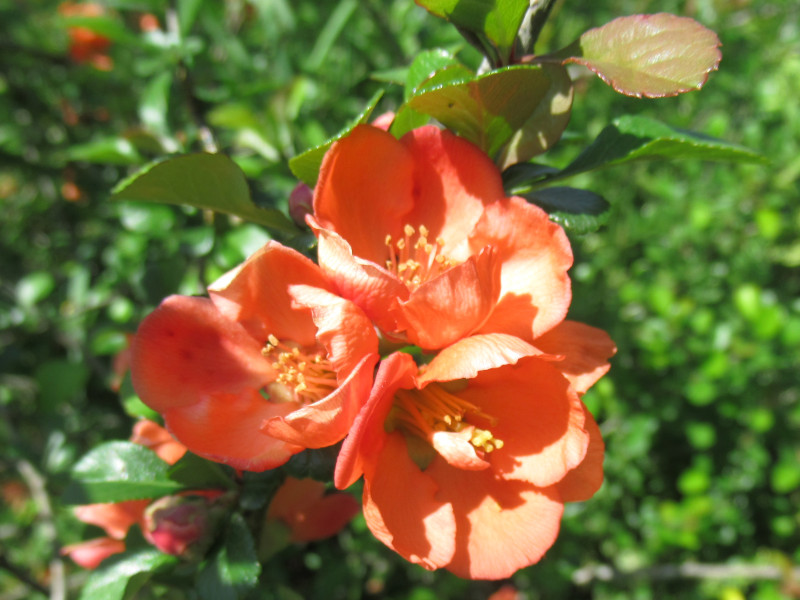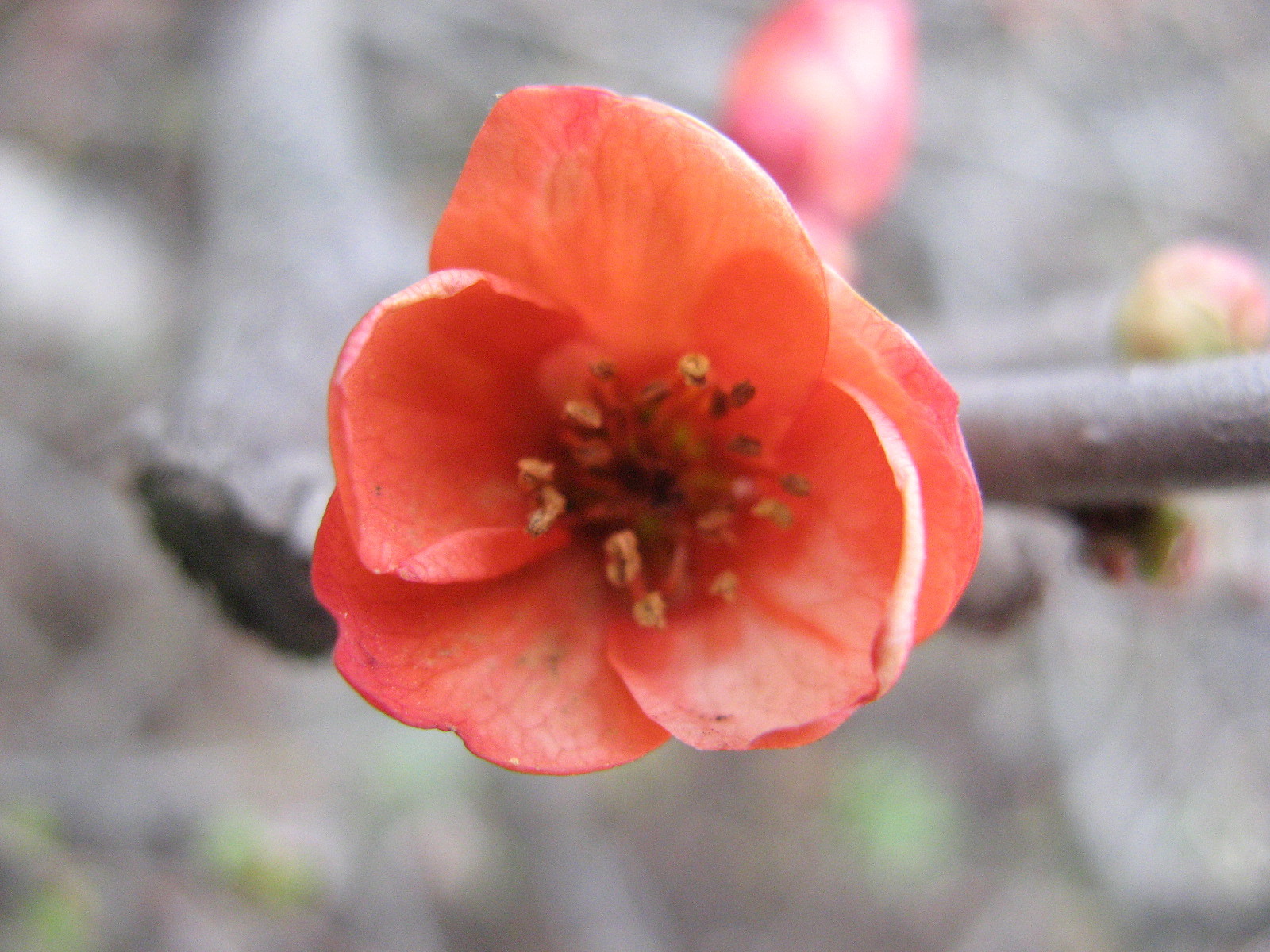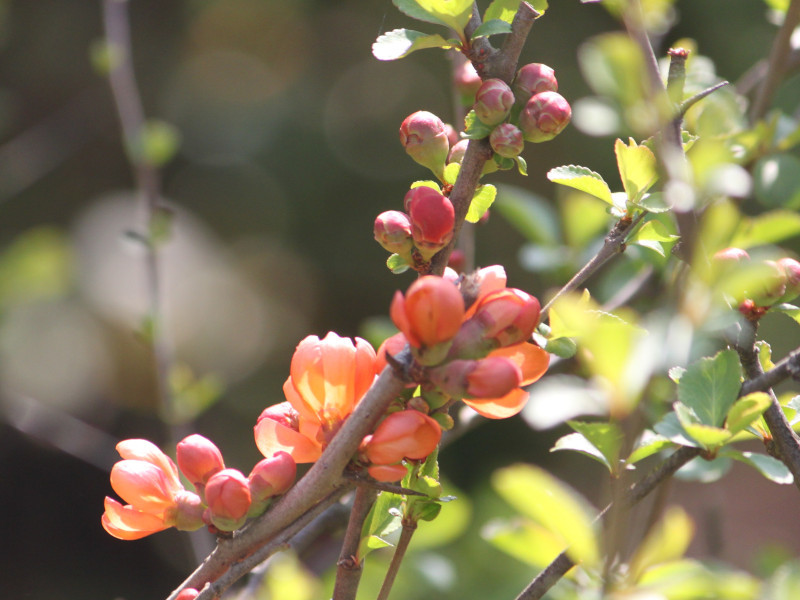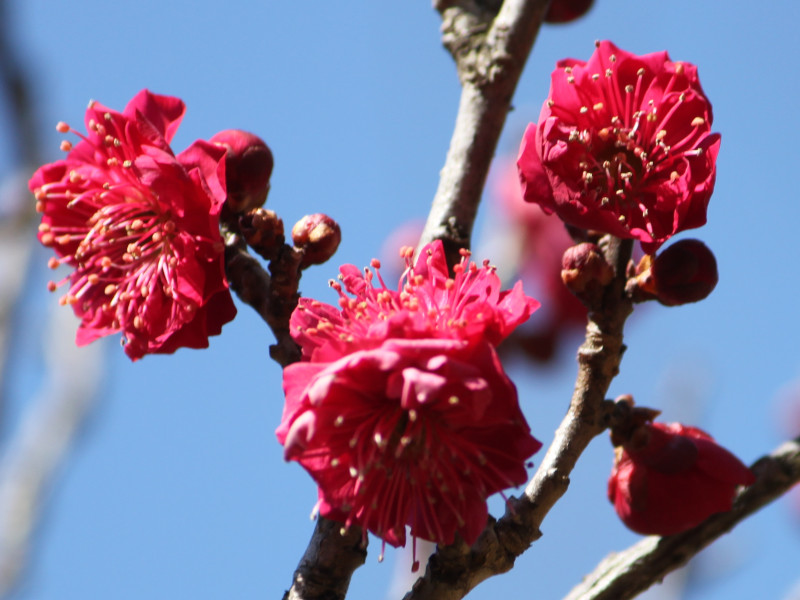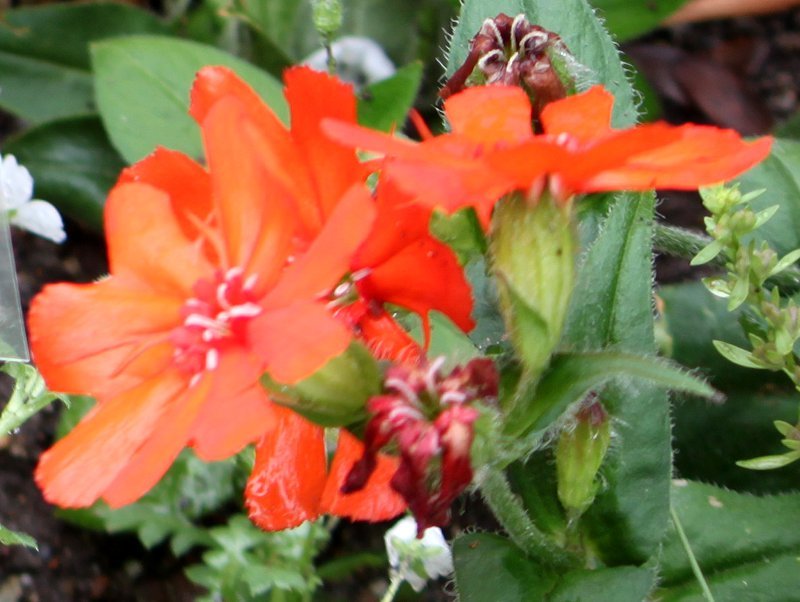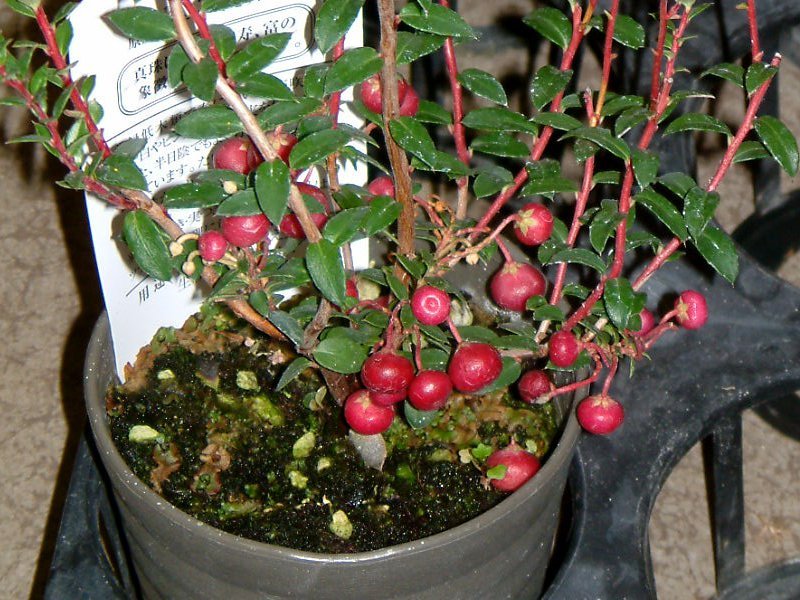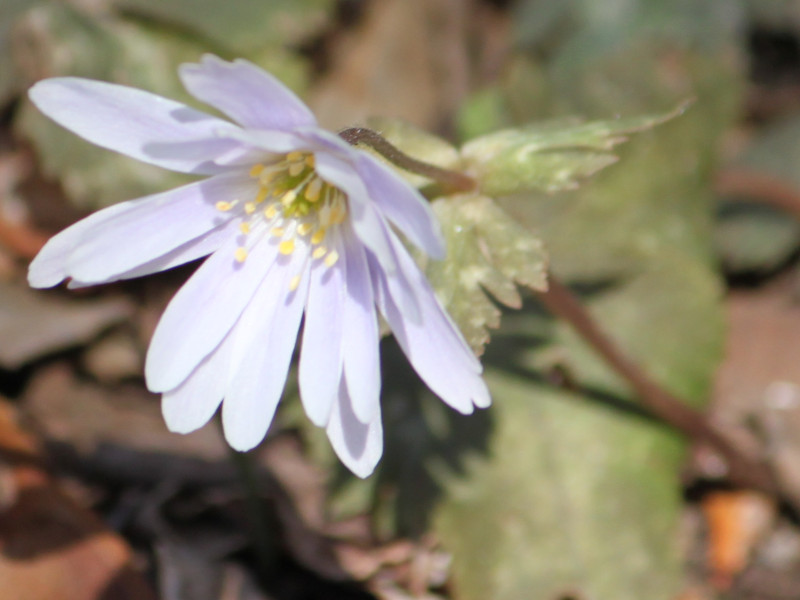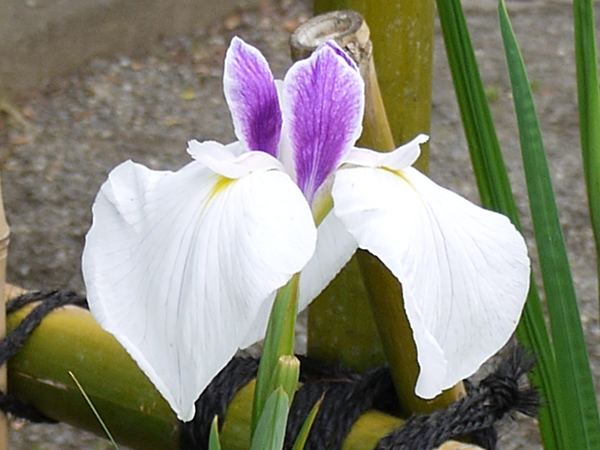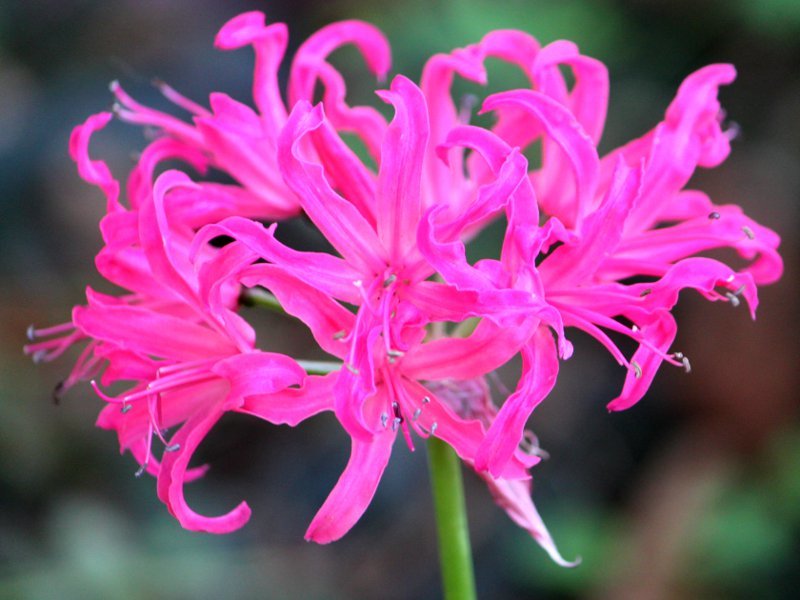Chaenomeles japonica
- Flower nameChaenomeles japonica
- Scientific nameChaenomeles japonica
- AliasJapanese quince, シドミ, 草木瓜, flowering-quince
- Place of originJapan
- Place of floweringGarden, Potted flower
- Flowering seasonApril, May
What is Chaenomeles japonica
Japanese Quince is native to sunny mountains and fields from Honshu to Kyushu in Japan. The tree height ranges from 30 to 50 cm, and the plant branches from the base, spreading horizontally and standing up in a grass-like manner. The bark is dark brown. The branches have thorns. The leaves are obovate, 5 to 15 cm long, with serrated edges, and alternate. The plant is monoecious. From April to May, it produces flower stalks and extends racemes from the leaf axils, blooming 3 to 5 flowers per cluster, with a diameter of 2.5 to 4 cm. Flower colors include vermilion and occasionally white. From July to August, it bears fragrant, pear-shaped, spherical fruit with a diameter of 3 cm, which turn yellow when ripe. The fruit flesh becomes woody and hard, making it unsuitable for raw consumption. The fruit is used for making fruit liquor and as a painkiller. The medicinal name is "Wamokka" (和木瓜). Despite its name, it is not a herb but a shrub. Compared to Chaenomeles speciosa, Chaenomeles japonica is generally smaller.
Origin of the Name:
The Chinese quince is named "木瓜" (Mu Gua), meaning "melon on a tree," because the fruit resembles a melon. This name was later converted into Japanese as "Mokka" and eventually "Boke." The Japanese Quince (クサボケ, Kusa Boke) is named so because it resembles the Chinese quince but is shorter, like grass.
The genus name "Chaenomeles" is derived from the Greek words "chaino" (to open) and "melon" (apple), referring to the cracked appearance of the ripe fruit. The species name "japonica" signifies "of Japan," indicating the plant's origin.
Common name: Chaenomeles japonica or Japanese quince, Scientific name: Chaenomeles japonica, aka: Boke , flowering-quince, Maule's quince, Kusa-boke, Classification: Kingdom Plantae, Angiosperms, Eudicots, Order Rosales, Family Rosaceae, Genus Chaenomeles, Species C. japonica, origin: Japan, habitat distribution: Honshu - Kyushu,Growing Environment: Sunny mountains and fields, life type: deciduous shrub, height: 30-50 cm, bark: dark brown, Petiole Length: 0.3-1 cm, with stipules, Leaf Length: 5-15 cm
Leaf Shape: Obovate with rounded tips , Leaf Margin: Serrated, Leaf Arrangement: Alternate, sex equinus, iMonoecious: Yes
Flowering Period: April to May , Inflorescence Type: Corymb , Flower Diameter: 2.5-4 cm , Flower Color: Vermilion, occasionally white , Number of Petals: 5 , Number of Stamens: Numerous , Number of Styles: 5 , Fruit Ripening Period: October , Fruit Shape: Pear-shaped
Fruit Diameter: 3 cm , Fruit Length: 10 cm , Fruit Color: Yellow when ripe , Uses: Bonsai, garden tree, the fruit can be used to make "Kusaboke wine" and painkillers, medicinal name is Wamokka.
